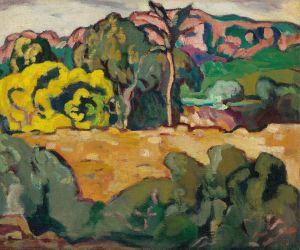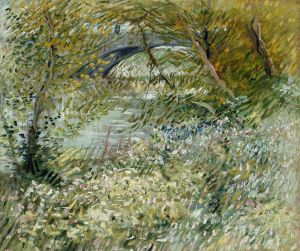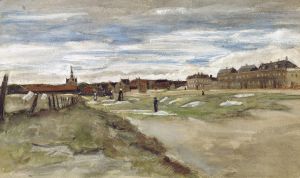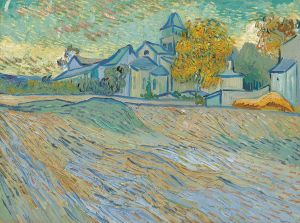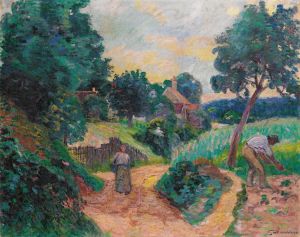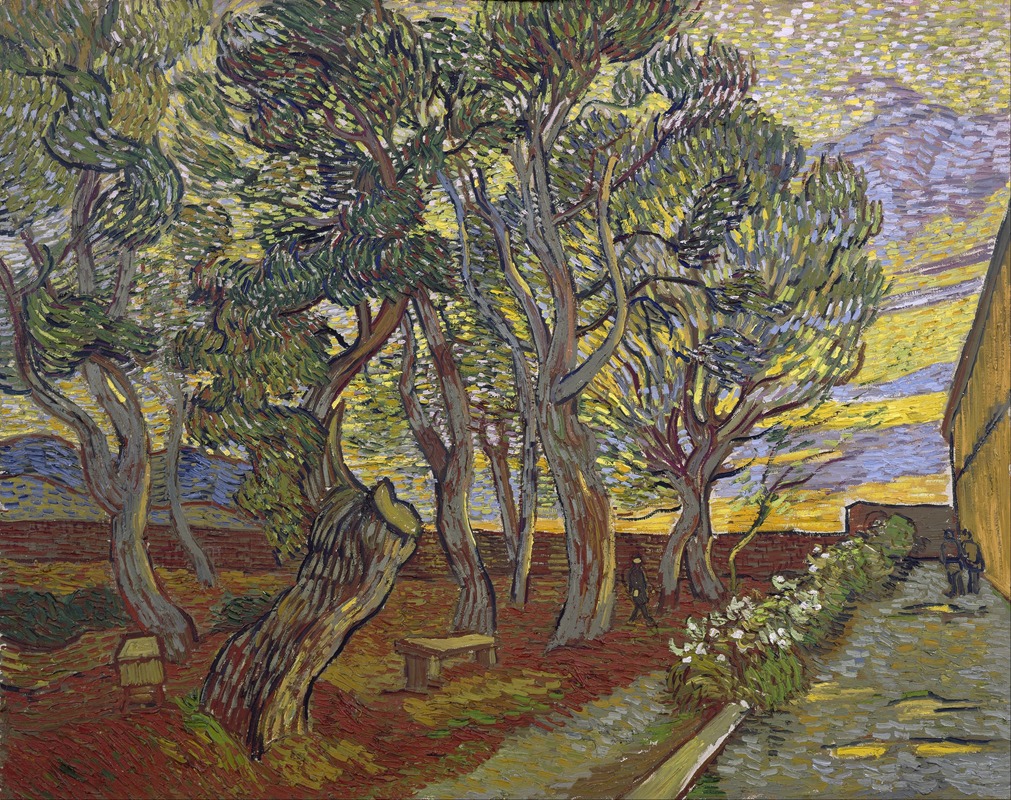
The garden of Saint Paul’s Hospital
A hand-painted replica of Vincent van Gogh’s masterpiece The garden of Saint Paul’s Hospital, meticulously crafted by professional artists to capture the true essence of the original. Each piece is created with museum-quality canvas and rare mineral pigments, carefully painted by experienced artists with delicate brushstrokes and rich, layered colors to perfectly recreate the texture of the original artwork. Unlike machine-printed reproductions, this hand-painted version brings the painting to life, infused with the artist’s emotions and skill in every stroke. Whether for personal collection or home decoration, it instantly elevates the artistic atmosphere of any space.
"The Garden of Saint Paul's Hospital" is a painting by the renowned Dutch artist Vincent van Gogh, created in 1889 during his stay at the Saint-Paul-de-Mausole asylum in Saint-Rémy-de-Provence, France. This period was marked by Van Gogh's struggle with mental health issues, and his time at the asylum proved to be both challenging and productive for his artistic output.
Van Gogh voluntarily admitted himself to the asylum in May 1889 after experiencing a series of mental health crises, including the infamous incident in which he cut off part of his own ear. The asylum, located in a former monastery, provided Van Gogh with a relatively peaceful environment where he could focus on his art. The institution allowed him to paint, and he was given a room that overlooked the gardens, which became a significant source of inspiration for his work during this time.
"The Garden of Saint Paul's Hospital" is one of several paintings Van Gogh created that depict the gardens and surrounding landscape of the asylum. The painting captures the lush and vibrant nature of the garden, characterized by its rich colors and dynamic brushwork, which are hallmarks of Van Gogh's style. The composition reflects Van Gogh's fascination with the natural world and his ability to convey emotion and movement through his use of color and form.
In this painting, Van Gogh employs a vivid palette, using bold greens, blues, and yellows to bring the garden to life. The swirling patterns and energetic brushstrokes create a sense of movement, suggesting the vitality and ever-changing nature of the garden. This approach is consistent with Van Gogh's post-impressionist style, which sought to express emotion and subjective experience rather than merely depict the physical world.
The garden itself was an important subject for Van Gogh, as it provided him with a sense of solace and tranquility amidst his personal struggles. The act of painting the garden allowed him to connect with nature and find a degree of peace and stability. This connection is evident in the way he captures the essence of the garden, transforming it into a vibrant and expressive work of art.
Van Gogh's time at Saint-Paul-de-Mausole was incredibly productive, resulting in some of his most famous works, including "Starry Night" and "Irises." "The Garden of Saint Paul's Hospital" is part of this remarkable body of work, showcasing Van Gogh's ability to find beauty and inspiration even in difficult circumstances.
The painting is now housed in various collections, with some versions and studies held in museums around the world. It continues to be celebrated for its emotional depth and artistic innovation, reflecting Van Gogh's enduring legacy as one of the most influential artists in Western art history.







